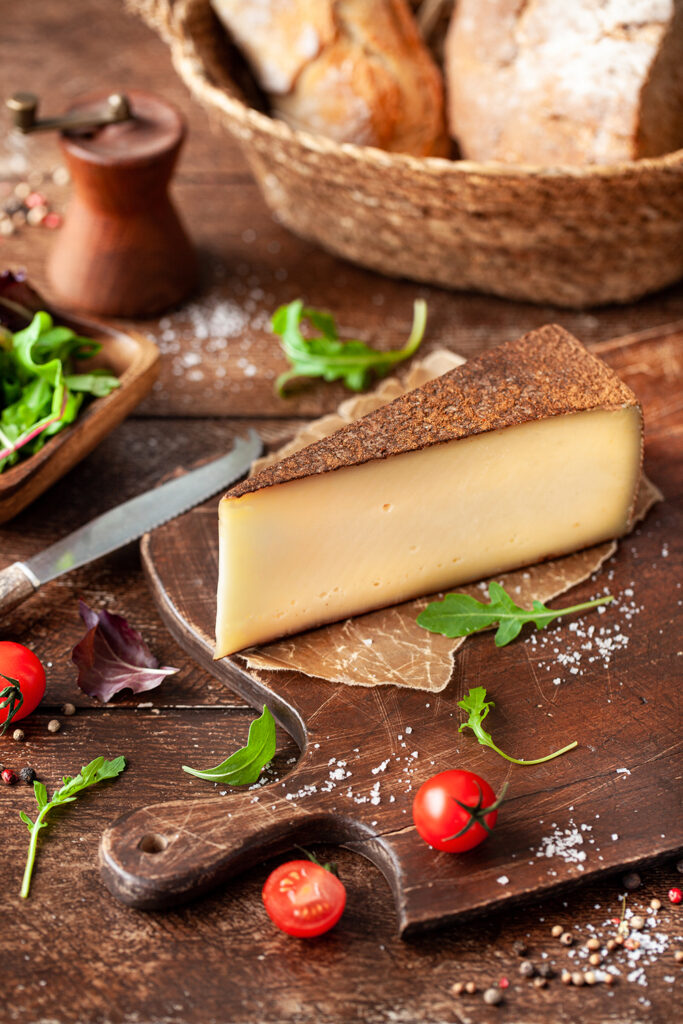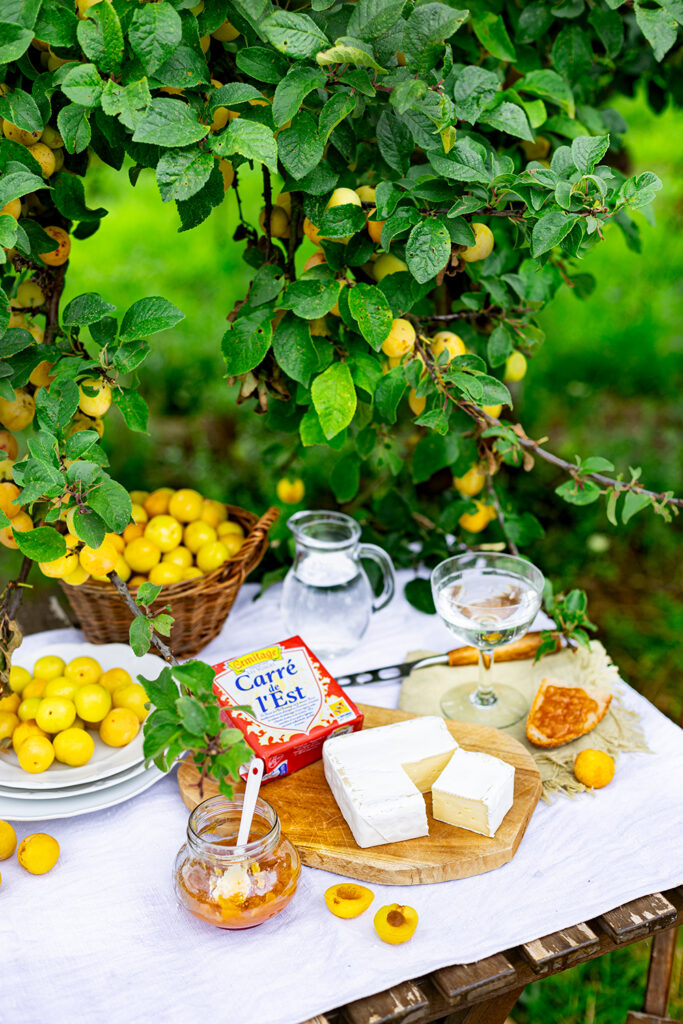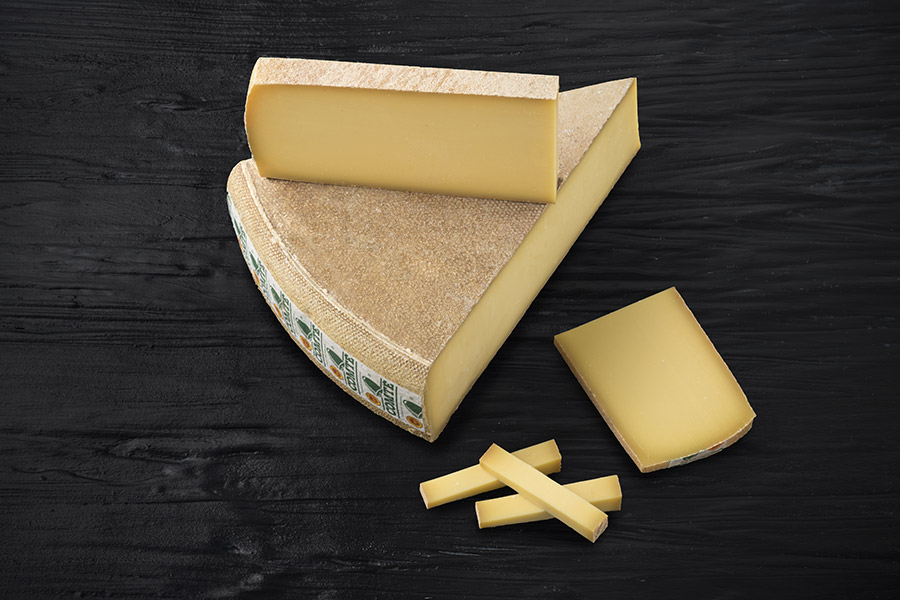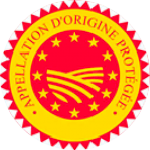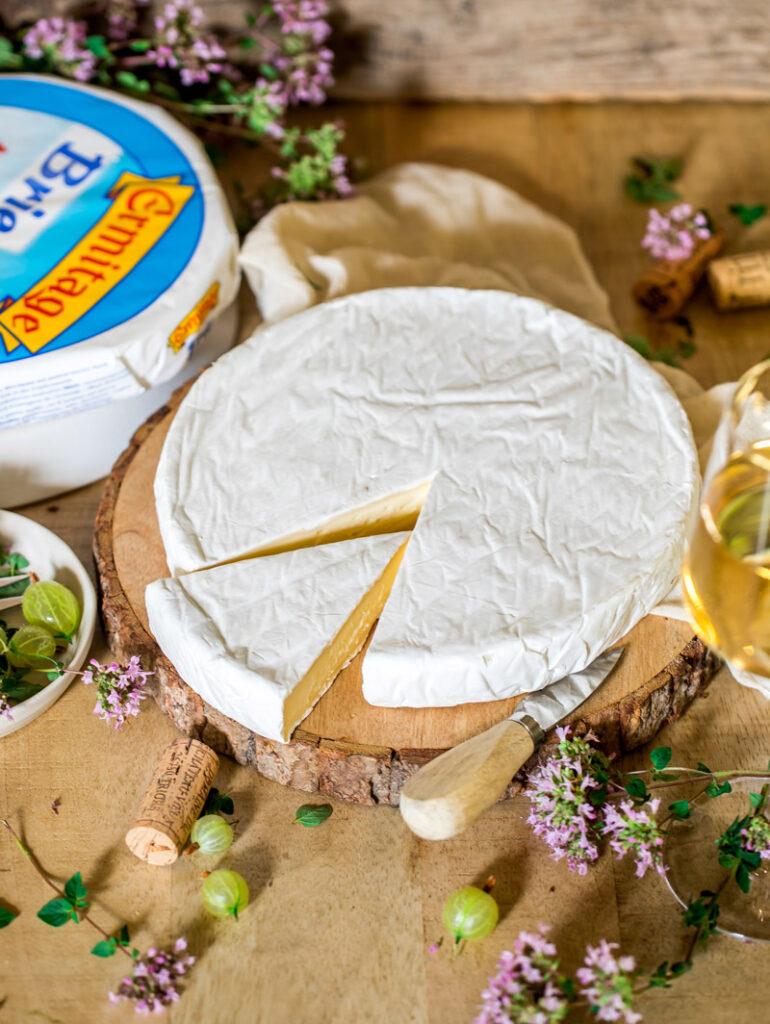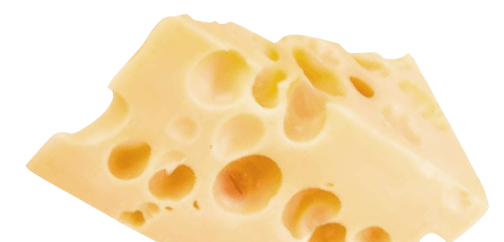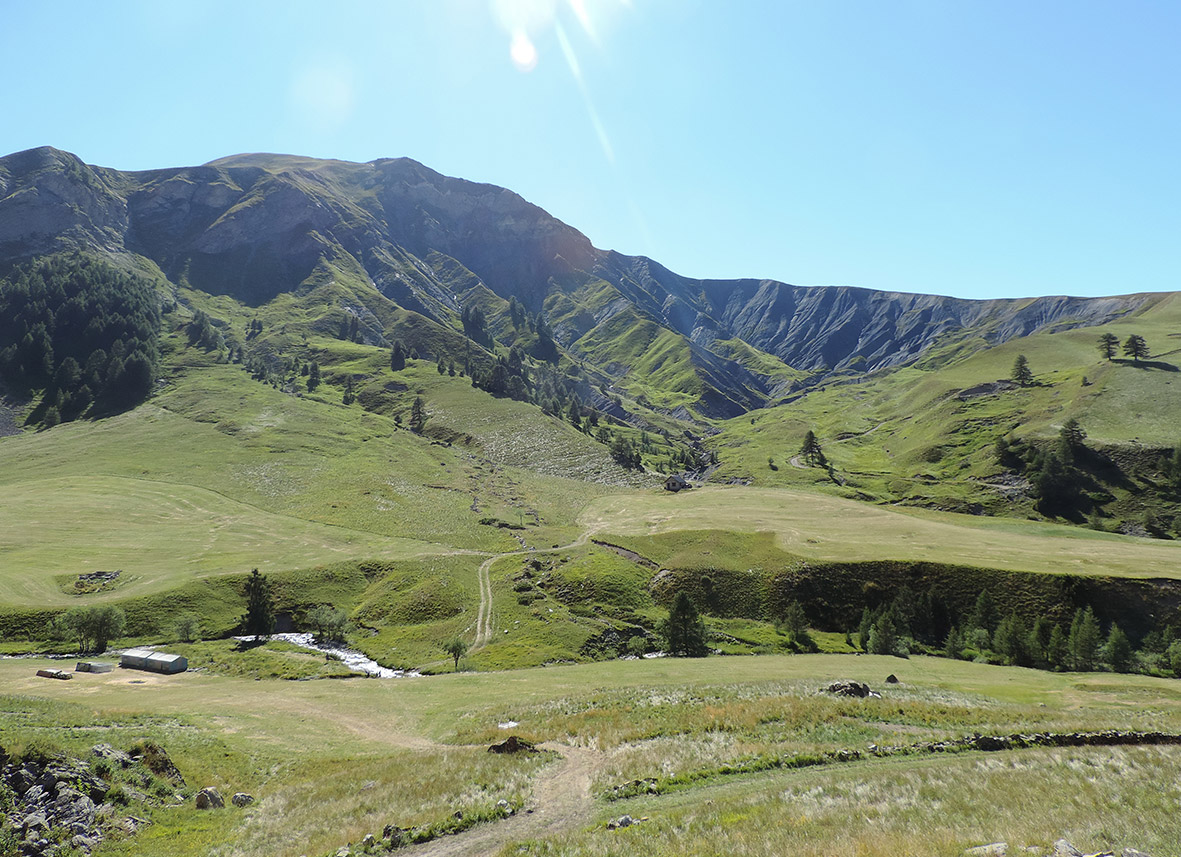
Ermitage, from producer to consumer!
From collection to production to shipping, discover how Ermitage cheeses are made.
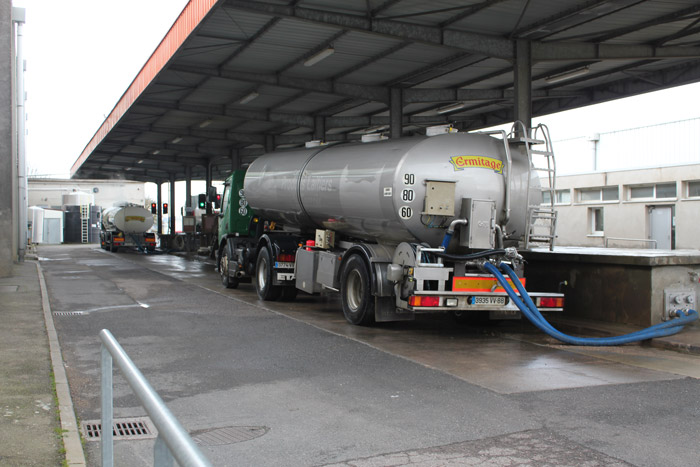
Collection
Almost 900 farms supply the Group’s production sites every day. Ermitage has its own fleet of vehicles and drivers who collect milk every day. The milk collection rounds are carefully planned to limit our environmental impact.
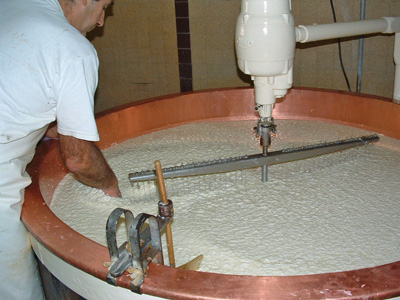
Milk processing
Good milk starts with healthy cows, good feed, and good breeding practices. Once the antibiotic tests have been carried out and are negative, the milk is transferred to the preparation workshop, where the temperature of the milk is controlled, and its bacteriological composition and quality are analysed and recorded. After standardising the fat and protein content to obtain a constant and regular quality, the milk is pasteurised and then stored to be transformed into cheese.
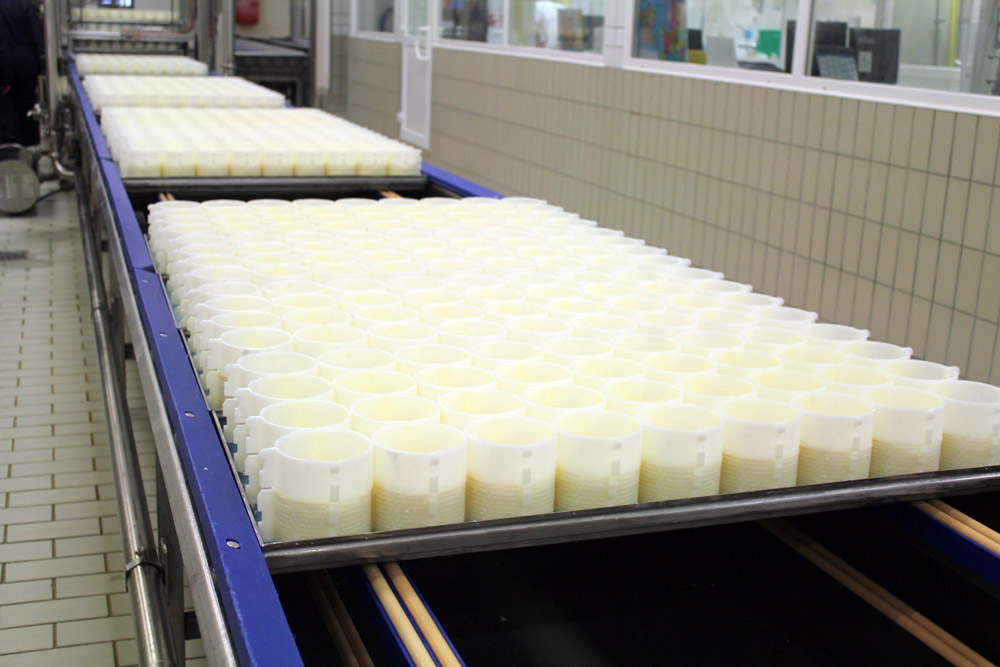
Ripening and curdling
The milk first undergoes maturation. This is where the milk ferments and beings to create differentiation between the cheese families.
Then a coagulant of animal or microbial origin is added: the milk will gradually change from a liquid to a solid state to form curd. It is the casein (milk protein) that coagulates by trapping the water in the milk.
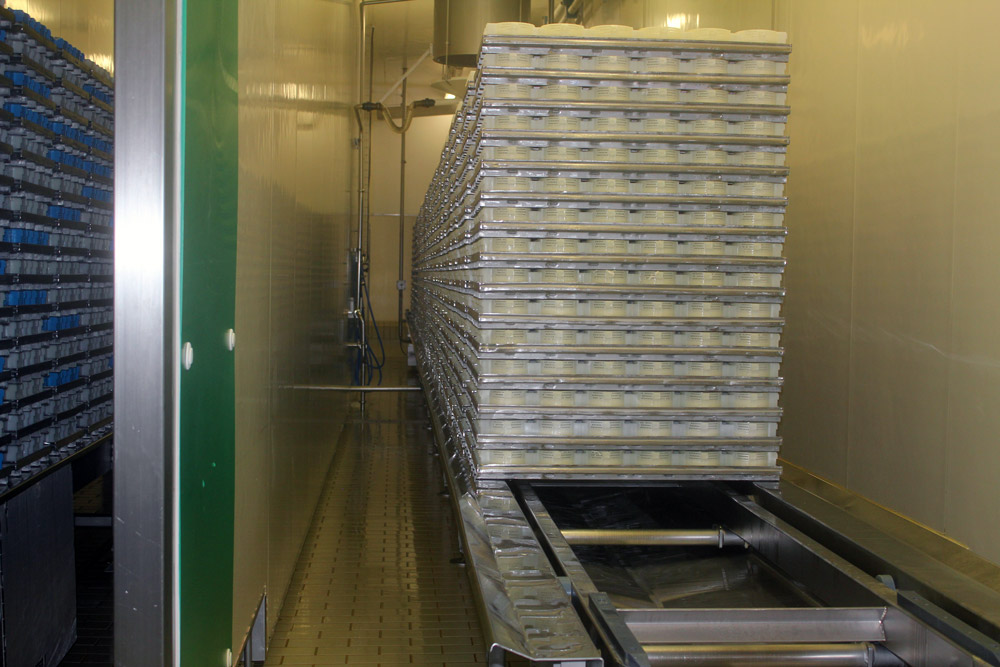
Brewing, moulding, and draining
After being sliced into regular cubes, the curd/serum mixture is stirred and then poured into moulds which gives the cheeses their shape and weight.
The moulds are then stacked and turned upside down to remove as much serum as possible. Draining continues for 15 to 20 hours, as the quality of the paste develops.
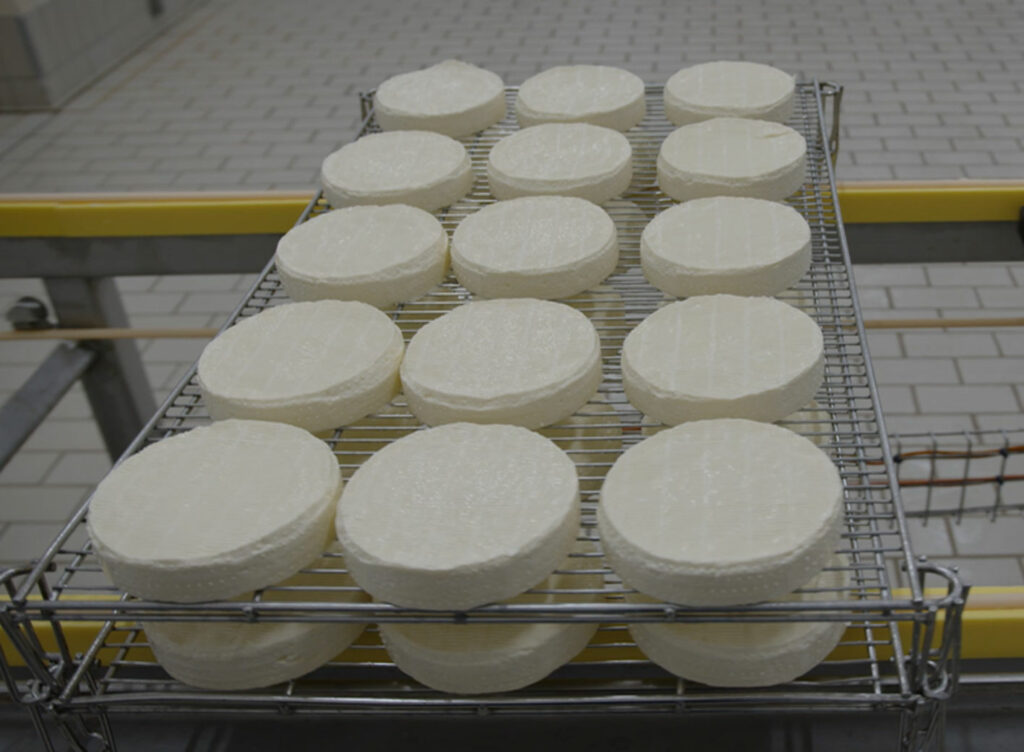
Demoulding and salting
At the end of this slow preparation, the cheeses are removed from the mould and salted. Known as a flavour enhancer, salt is essential for cheese production and preservation.

Maturing
Then comes maturing, a major stage that gives the cheese its character. Human experience is essential. The atmosphere of the cellars and the care they receive will shape the character and taste of the cheeses: humidity, temperature, air circulation, everything is important. The brine-washed soft cheeses are regularly rubbed with specific ferments that give them such a warm colour. Day after day, the production and maturing team follows the evolution of the cheeses, watching them vigilantly and repeating the practices handed down from generation to generation.
The soft cheeses with bloomy and mixed rinds, on the other hand, mature in the ripening room, until they obtain their beautiful white colour, called bloom.
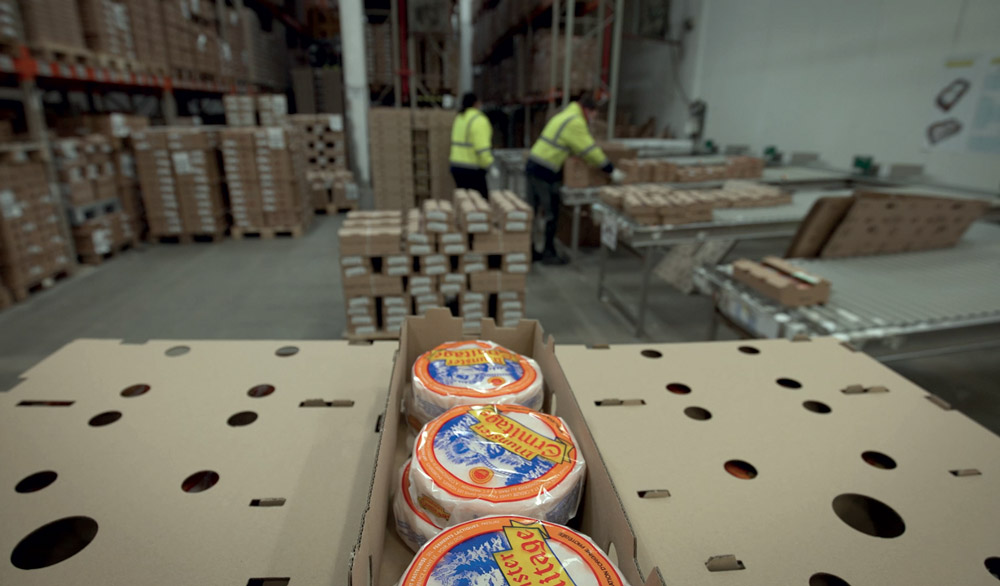
Packaging and shipping
Once matured, the majority of cheeses are analysed so that they can be released for packaging and dispatch.
Controlled quality and traceability!
Ermitage produces cheeses with a seal of quality, offering consumers the assurance of quality.

